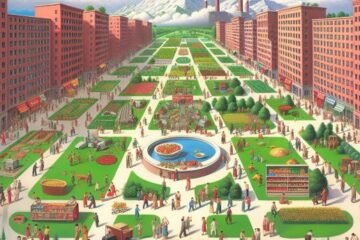Affordable housing is a common challenge in many urban and suburban areas, especially in the U.S., where housing costs have been rising faster than incomes. However, affordable housing is not the only problem or the only solution for improving the quality of life and social outcomes in fragile neighborhoods.

Poverty doesn’t cause social breakdown, nor is social breakdown confined to areas with high levels of poverty
According to Seth Kaplan, an expert in fragile states, poverty doesn’t cause social breakdown, nor is social breakdown confined to areas with high levels of poverty. Rather, it’s the product of unhealthy social environments that typically accompany concentrated, intergenerational poverty in America today.
The byproducts of these poor social environments, such as crime, violence, lack of education, and environmental degradation, tend to multiply in areas where poverty is highly concentrated, making it harder for someone who is poor and living in an unhealthy neighborhood to achieve upward mobility compared to someone who is poor but living in a healthy neighborhood.
Increasing the supply of affordable housing is necessary but not sufficient
While increasing the supply of affordable housing is necessary in areas with rapidly rising housing costs, it won’t, by itself, make a significant dent in the country’s affordability problems, especially for those with the most severe needs. In part, that’s because in much of the country, there is actually no shortage of rental housing. The problem is that millions of people lack the income to afford what’s on the market.
Renters with the most severe affordability problems have extremely low incomes. Nationally, about 45% of all renter households spend more than 30% of their pretax income on rent – the widely recognized threshold of affordability. About half of these renters, 9.7 million in total, spend more than 50% of their income on housing, greatly impairing their ability to meet other basic needs and putting them at risk of becoming homeless.
What else can be done to address affordable housing and other challenges in fragile neighborhoods?
While increasing the supply of affordable housing is a key component of urban revitalization strategies, it should be complemented by other interventions that address the root causes and consequences of poverty and social breakdown in fragile neighborhoods. Some examples are:
- Providing adequate public services and infrastructure, such as schools, health care, transportation, and sanitation,.
- Promoting community engagement and empowerment, such as through participatory budgeting, neighborhood associations, and civic education,.
- Supporting economic development and diversification, such as through entrepreneurship training, job creation opportunities, and local procurement,.
- Enhancing environmental sustainability and resilience, such as through green building standards, renewable energy sources, and disaster risk reduction,.
By combining these approaches with increasing the supply of affordable housing and other policies that foster healthy social environments in fragile neighborhoods, we can create more opportunities for people to live dignified and productive lives.







